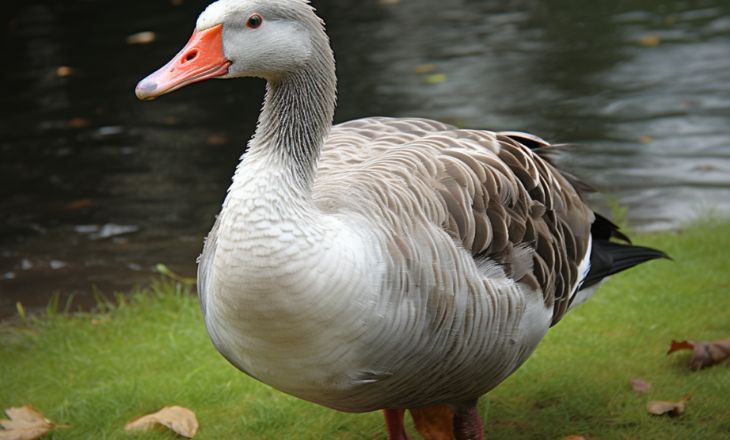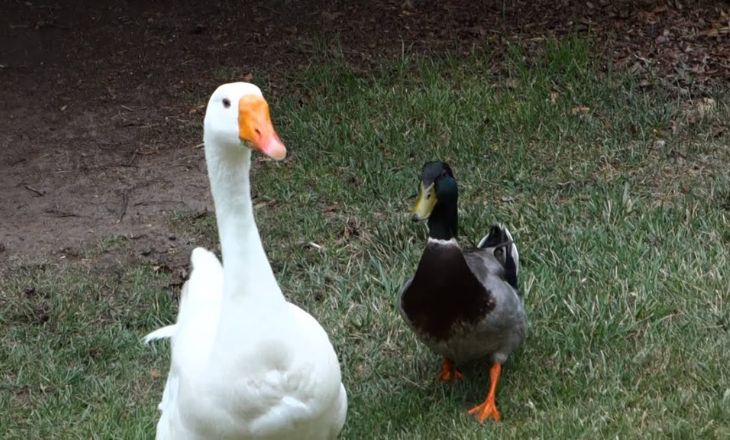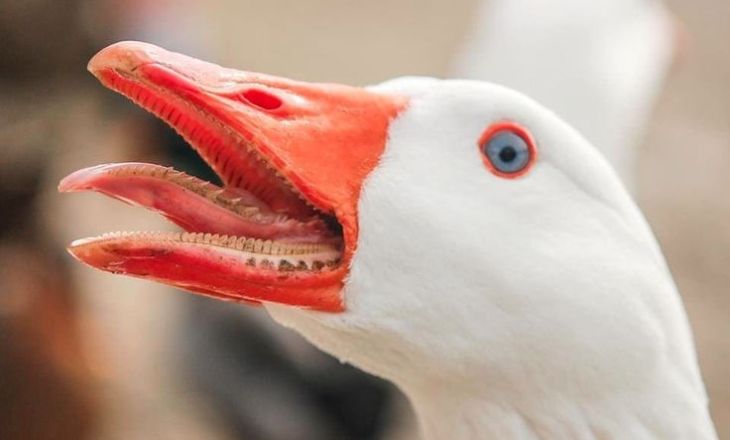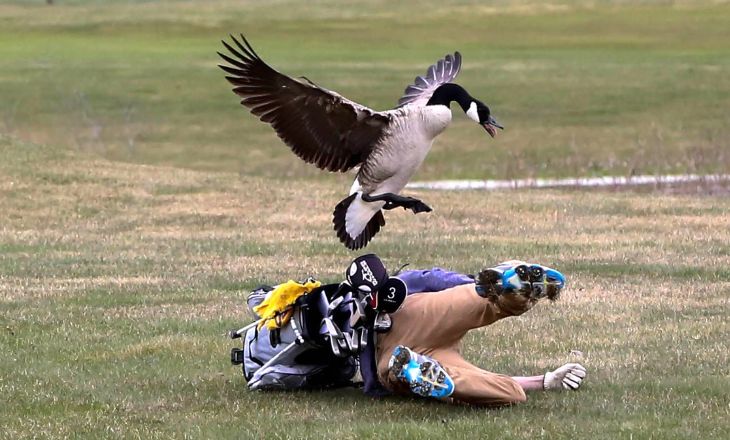Geese, with their long necks and webbed feet, are iconic symbols of wildlife across various cultures. These are seemingly graceful creatures that frequent parks and bodies of water often leave us mesmerized with their honking and formation flying.
But beneath their charming facade lies a mysterious aspect that many overlook that the existence of teeth in these waterfowl. In this article, we will uncover surprising facts, examine intriguing pictures, and unravel the truth behind do Geese have teeth.
Do Geese Have Teeth?
From a biological standpoint, geese do not possess traditional teeth like mammals. They have tomia structures, which are serrated edges along their beaks that help them grasp and consume food. These tomia serve a similar function to teeth in terms of aiding in the ingestion process, but they are not the same as the enamel-covered teeth found in humans.

Different unique adaptations present in different species to suit their dietary needs. In the case of geese, their specialized beak structure allows them to efficiently feed on vegetation and small aquatic organisms.
The small, sharp, and pointy structures that we see in the mouths of geese and ducks are not actually teeth. Birds, including white geese, do not have teeth as part of their anatomy. These birds have a serrated feature on their tongues that serves a similar purpose to teeth when it comes to eating and processing food.
Scientists and researchers refer to this serrated feature in the mouths of geese and ducks as something other than teeth. It may look like teeth at first glance, it is important to understand that birds have evolved different adaptations for feeding and digestion compared to mammals.
Geese And Duck Are Just Toothless
The sharp pointy features found in geese and ducks, known as tomia, may resemble teeth but are actually not teeth at all. Tomia are serrated structures that serve a similar function to teeth in helping these birds grasp and manipulate their food.

The size and shape of tomia can vary depending on the bird’s diet, with different species developing unique adaptations for their specific feeding habits.
It may be surprising to learn that geese and ducks do not have actual teeth, the presence of tomia showcases how evolution has equipped these birds with specialized structures to aid in their feeding processes.
Why Can’t Tomia Be Considered Teeth?
Tomia cannot be considered teeth because Tomia is a term used to describe the cutting edges of teeth, such as incisors and canines. Teeth are hard, mineralized structures that are part of the skeletal system and serve various functions like chewing food and speaking. Tomia specifically refer to the sharp edges of teeth that help in cutting and tearing food.
Tomia is a part of the beak and tongue, It’s not a separate part of the body like teeth are
Teeth and tomia are indeed different in their structure and function. Teeth are hard, calcified structures that are found in the mouth of humans and animals, used for biting, chewing, and grinding food.

They play a crucial role in the digestive process. Tomia are serrated edges found on the beaks and tongues of certain animals like geese. These serrations help them grip and tear food more effectively.
Tomia Can’t Be Called Teeth Because They Are Not As Durable, And Functional As Teeth
The teeth found in humans and animals are strong and durable because they are essential for chewing and breaking down food. These teeth are made up of hard enamel and dentin, designed to withstand the pressures of eating.
The structures that appear like teeth in a goose’s mouth may not meet the criteria of being called actual teeth. Geese have serrated edges in their beaks that help them grip and tear food, but these structures are not as sharp or strong as true teeth.
How Can Tomia Be Taken As Teeth When It Isn’t Made From Enamel, Dentin, Pulp, Or Cementum?
The structures that appear like teeth in the mouths of geese, known as tomia, are made up of cartilage rather than the four tissues found in mammalian teeth. With this difference in composition, tomia still serve a similar function to teeth by helping geese grasp and manipulate their food.
Tomia may not have enamel, dentin, pulp, or cementum like mammalian teeth do, they are specialized adaptations that have evolved to suit the dietary needs and feeding habits of geese.
Characteristics Of Geese’s Tomia
Geese have many characteristics some of which are given below.
Even If Tomia Takes The Shape Of Teeth, It Can Still Not Be Taken As Teeth At All
Yes, it may sound surprising, but the size and shape of a bird’s tomia are indeed influenced by its diet. Tomia are the serrated edges found on the beaks of some birds, which help them grasp and tear food.
Even if geese were to develop similar serrations on their beaks and start using them for a similar purpose, we would still refer to them as tomia rather than teeth. This unique adaptation showcases how different species evolve specialized features based on their dietary needs.
Humans And Almost All Animals Have Been Blessed With Teeth And Birds Have Beaks Instead
Teeth are a common feature among mammals, but there are some exceptions like platypuses, anteaters, and certain whales that do not have teeth. Birds, on the other hand, have beaks which serve a similar purpose as teeth.
Without these teeth, birds like geese can efficiently catch and chew their food using their beaks. Beaks are uniquely adapted to each bird’s diet and lifestyle, allowing them to consume and process food in different ways compared to mammals with teeth.
The evolution of beaks in birds has allowed them to thrive in various environments and adapt to different types of food sources. From seed-cracking beaks of finches to fish-catching beaks of pelicans, each bird species has a specialized beak shape that helps them survive and thrive in their habitats.
Tomia Might Not Be As Sharp As Teeth But Still, They Are Tough And Sharp Enough To Chew Food
Geese may not have traditional teeth, they have evolved a specialized feature called tomia that serves a similar purpose. These tomia are sharp and tough enough to help geese rip through grasses, aquatic vegetation, and small animals. This adaptation allows geese to effectively consume their diet without the need for actual teeth.
Tomia Is So Sharp That A Mild Geese Bite Can Draw Blood
Geese may seem harmless at first glance, but their interior mouth structure contains sharp tomia that can cause a lot of damage if you get bitten. These tomia are so sharp that even a mild bite from a goose can draw blood easily. It’s important to avoid getting bitten by geese to prevent injury and discomfort.

The sharpness of the tomia in a goose’s mouth is one of the reasons why most people are cautious around these birds. It’s best to give geese their space and not provoke them to avoid any potential bites.
Geese Might Not Have Teeth Because Tomia Offer Better Grip
Teeth are not the only way animals can adapt to their dietary needs. Geese, for example, have evolved specialized adaptations in their beaks to help them eat a wide variety of foods. Their tomia, which are the rigid linings on their tongues, provide better grip and help in tearing and uprooting tough vegetation from the soil. Without teeth, geese are able to efficiently consume grasses, grains, roots, insects, and rodents that make up their diet.
The absence of teeth in geese is actually an advantage, allowing them to grab and consume a diverse range of foods that would be difficult to manage with traditional teeth. Their beaks have evolved to perform the functions of both gripping and tearing food effectively.
Geese And Other Birds Used To Have Teeth, Where Did They Go?
Birds do not have teeth like mammals do. Instead, they have a unique feature called tomia, which are serrated edges in their beaks that help them grip and eat their food. Tomia may look like teeth, they are not made of the same materials and are not as durable or functional.
The evolution of birds losing their teeth is believed to have occurred around a hundred million years ago. This change may have been influenced by changes in their diet or lifestyle over time.
Conclusion
Do geese have teeth on their tongues? this confusion is cleared in this article. In the traditional sense, geese do not have teeth, they have serrated edges in their beaks called tomia that serve a similar purpose. These tomia help geese grasp and tear food as they forage in their natural habitats. Geese also have papillae on their tongues which aid in breaking down and digesting their food.
The absence of traditional teeth does not hinder geese from thriving in the wild and adapting to different environments. Next time you see a goose, observe its unique feeding behavior and appreciate the specialized adaptations that make these birds successful survivors in the animal kingdom!
FAQ’s
Do Geese Bite When They Are Aggressive?
Geese can bite when they are feeling threatened or aggressive. Geese are known to be protective of their territory and will defend themselves if they feel threatened. They have strong beaks that can cause painful bites, so it’s best to avoid getting too close to a goose that is acting aggressively.
Are Geese Teeth Sharp Like Human Teeth?
Geese do not have teeth like humans do. Geese have serrated edges on their beaks that help them grip and tear food. These serrated edges act like tiny saws to help the geese break down tough vegetation and other food items they eat.
Are Geese And Goose The Same?
Geese and goose are related terms, but they refer to different things. Geese are waterfowl birds that belong to the Anatidae family, which also includes ducks and swans.
- Chicken Pecking Order: Top Secrets Of Chicken Flocks (2024) - May 26, 2024
- Top 5 Differences Between Rabbits and Hares - May 25, 2024
- 9 Edible Weeds Likely Growing in Your Yard (2024) - May 23, 2024

